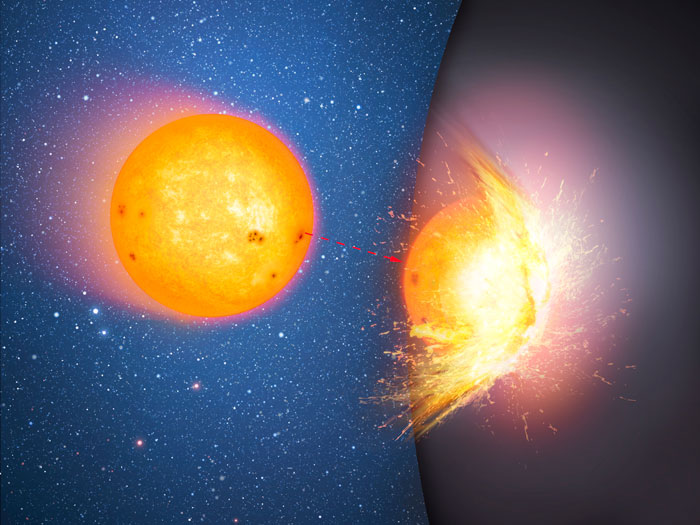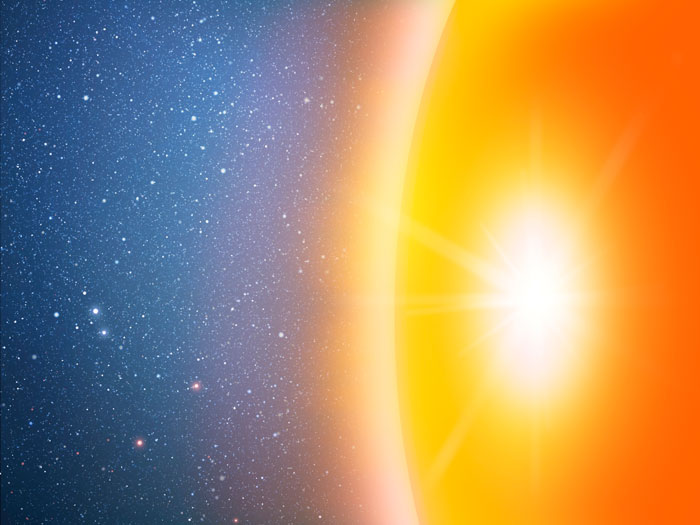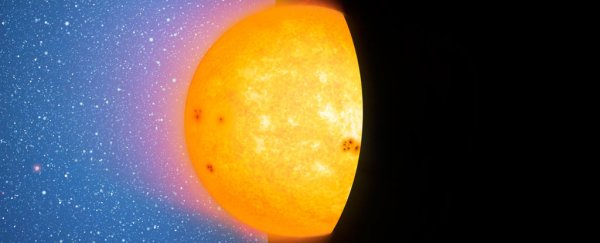Scientists have found new evidence to support the idea that matter vanishes completely when it falls into a supermassive black hole, suggesting Einstein was right about these unquenchable voids lurking throughout the Universe.
The findings show that black hole event horizons – the invisible barriers beyond which nothing can escape the intense pull of gravitational singularities – are very real, meaning when something falls into a black hole, it's swallowed entirely, and doesn't crash into a hard surface.
"Our whole point here is to turn this idea of an event horizon into an experimental science, and find out if event horizons really do exist or not," says astrophysicist Pawan Kumar from the University of Texas at Austin.
"Our motive is not so much to establish that there is a hard surface, but to push the boundary of knowledge and find concrete evidence that really, there is an event horizon around black holes."
While supermassive black holes are thought to exist at the centre of most galaxies, scientists have also speculated that the phenomena occupying these galactic centres – sometimes called central massive objects – could in fact have hard surfaces.
If that were the case, the idea is that galaxies could contain a supermassive object that's not a black hole, and which has somehow managed to avoid collapsing into a singularity – a space of literally infinite density.
 What a supermassive smash might look like. Credit: Mark A. Garlick/CfA
What a supermassive smash might look like. Credit: Mark A. Garlick/CfA
The hypothesis – based on a modified theory of Einstein's general relativity – means that if a wandering star were to collide with this mysterious supermassive hard object, we'd be able to detect the impact, whereas a black hole would consume the star entirely, meaning even its light couldn't escape.
To test this, Kumar's team ran some calculations, and figured out that if a star ran into a non-collapsed supermassive phenomenon, it would flare with intense heat and light as its gas surrounded the object, and create a cosmic light show that could be observed for months or even years.
With this incendiary prediction in hand, the researchers sifted through survey data compiled by the Pan-STARRS telescope in Hawaii, looking for examples of any temporary flare events – called transients – that might match what you'd expect to see in a supermassive smash.
 Intense flaring after a supermassive smash. Credit: Mark A. Garlick/CfA
Intense flaring after a supermassive smash. Credit: Mark A. Garlick/CfA
"Given the rate of stars falling onto black holes and the number density of black holes in the nearby Universe, we calculated how many such transients Pan-STARRS should have detected over a period of operation of 3.5 years," explains one of the team, Wenbin Lu.
Based on the calculations, the team expected to find more than 10 examples of flaring that could have been produced by a star crashing into a hard supermassive object – but ultimately the Pan-STARRS data revealed none.
While that doesn't disprove the 'hard surface' hypothesis entirely, the team thinks it does make the notion a lot less likely, while adding further weight to the more orthodox argument that black holes are surrounded by event horizons, as Einstein predicted a long, long time ago.
"Our work implies that some, and perhaps all, black holes have event horizons and that material really does disappear from the observable Universe when pulled into these exotic objects, as we've expected for decades," says one of the researchers, Ramesh Narayan from Harvard University.
" General relativity has passed another critical test."
When you put it like that, it almost feels comforting to know that Einstein was probably right all along, and that one of humanity's most important and enduring scientific theses is still holding up more than a century after it was devised.
Except then you have to remind yourself that this research basically green-lights the existence of matter-annihilating space voids that will mercilessly devour whatever's in their path.
The findings are reported in Monthly Notices of the Royal Astronomical Society.
